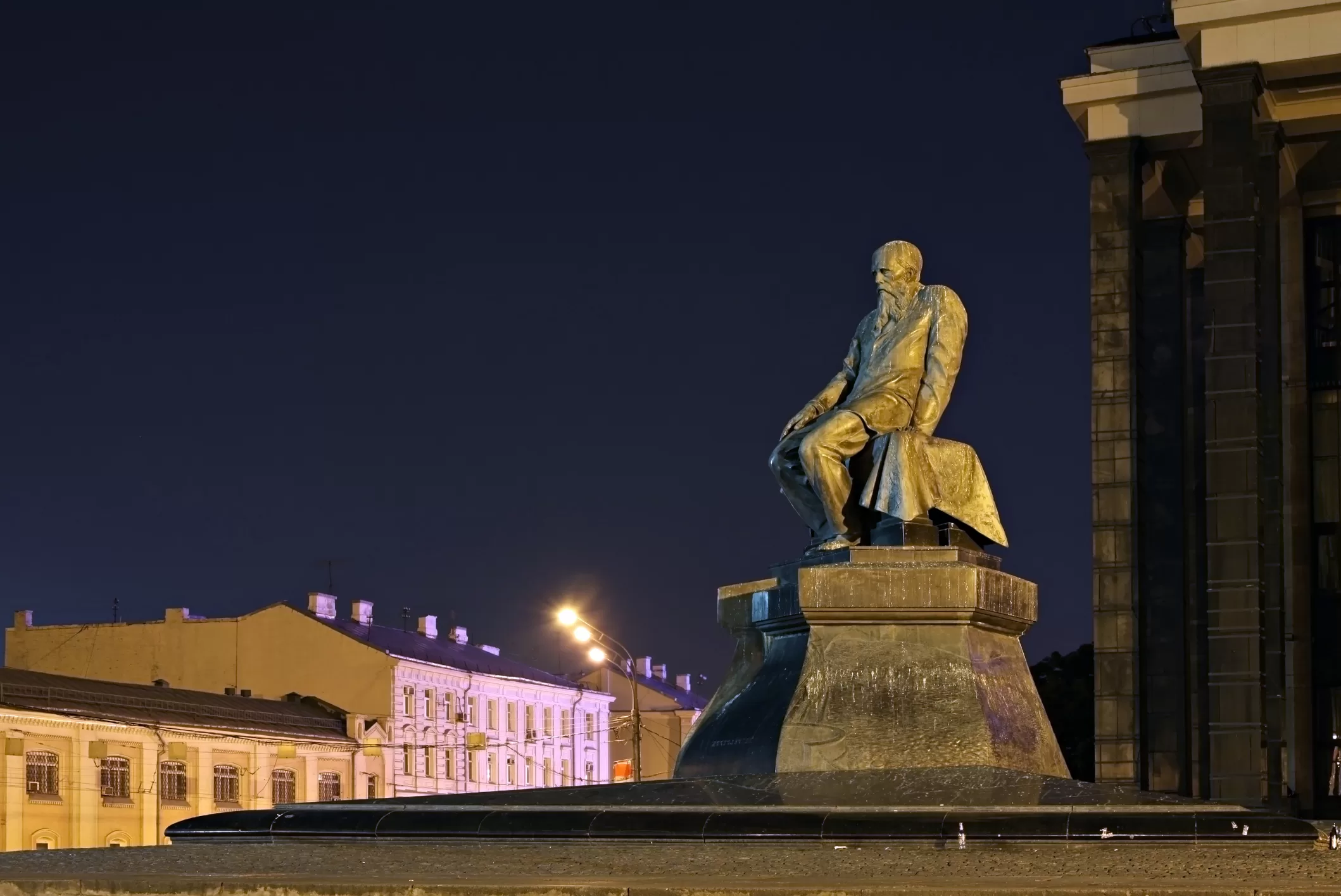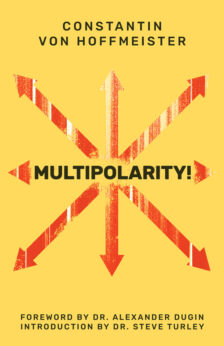No principle and no concept is free from reality. It is wrong to regard reality as something static and fixed as it is. Reality is an objective reality that cannot be controlled, but at the same time it is an extremely subjective reality. All the emotions we harbor, whether anger, hatred, or love, all of the excitement, adventure, and so on, are stimuli arising from life and nature. Without this existence of life and nature, there would be no reality. Therefore, to be committed to reality is to be committed to one’s own life. If we assume that there is such a thing as pseudo-realism, it is a life without self. It is a life without individuality. And the art that comes from such a life is the art of mannerism, the art of imitation. Although he wrote the following about dramaturgy in general, the words of August Strindberg are applicable to art and literature as well: “When an actor discovers an appropriate mode of expression for the most ordinary emotion and wins success through this means, then without due consideration as to its suitability or unsuitability to the occasion, he may – on the one hand because it is facile, on the other because of his success with it – be prone to employ this device. And this is what may be termed a mannerism.”
It is a matter of course that it is a crime for a writer to be forced by mainstream publishers to write only what is popular, and thus resort to mannerism. Great writers can, of course, rise above such constraints. The playwright Kan Kikuchi’s masterpieces were sometimes written in response to the theater owner’s unreasonable deadline, Charles Baudelaire wrote for amusement, and Fyodor Dostoevsky even changed the character of Stavrogin in Demons in response to the demands of his readers.
Many inspirations start from imitation and are unique creations, and pure writers are blessed with an innate talent for trading in the vulgar and turning it into a unique activity, a discovery of the ego.
In fact, freedom is a heavy burden, and it is a problem when a writer of fiction is asked to write a masterpiece on his own initiative, but when he is asked to write a particular work under such conditions, it is easy to for him take this as an opportunity to engage in unmeasured activities. Therefore, a popular writer who is often tempted to write a masterpiece from the outside is under conditions that make it easy to write a masterpiece, and this is not the external condition that prevented him from writing a so-called good work.
At the age of twenty-five, Dostoevsky wrote his first masterpiece Poor Folk, and then the novella The Double, both of which won him instant recognition, but he was then silenced by the critics until the age of forty or so. Unlike an unknown writer who immerses himself in his novels with hope for the future, a man who has once made a living in writing is gloomy when his manuscripts no longer sell and he can no longer make any money from his writing. In other words, he was in the clutches of freedom, so he was groping in the dark, which is a maze. When a person is stupefied, he is lost, and he cannot even manage his talent. Of The Double, a depiction of madness that is both realistic and poignant, hallucinatory and reminiscent of the best of Poe or Strindberg, Dostoevsky wrote, “Most decidedly, I did not succeed with that novel; however, its idea was rather lucid, and I have never expressed in my writings anything more serious.” It was only after his death that The Double received positive reviews. Obviously, Dostoevsky from twenty-six to forty was not incapable of writing good works, but he had lost, or been denied, the conditions for writing. Dostoevsky, who became a popular writer in his later years, gave full play to his abilities in response to a bad trade. Human power is a helpless thing. In his very favorable analysis of Dostoevsky, the Shōwa critic Hideo Kobayashi wrote, “When we have uncovered the historical conditions that gave rise to the work, we become utterly convinced that its power is reducible to the sum of those various elements we identified through our analysis. We claim that having started from the vague, unstable wonder we felt when we first encountered the work, we have arrived at a more certain, exquisite understanding of it.” Indeed, to reach a complete understanding of a particular work, it is necessary to understand the context in which it was written. In the twenty-first century, at least in mainstream literary works, it is fashionable to deny that context exists, with self-appointed arbiters of “culture” insisting on viewing every writer, from Dostoevsky to Guy de Maupassant to Lu Xun through a modern, specifically American, lens. This results in a mediocre literature lacking introspection and also denies the writer any sense of exploration.
The fact that the current literary world is mediocre does not necessarily mean that mediocrity is the principle of the author. Nor do contemporary writers write with the intention of finding my sort of deeper meaning to life in such an uninspiring existence. In short, the author’s own life is uninspiring, which is why his works fall into mediocrity. I do not believe that reality is such a mundane and tasteless thing, nor do I think that no matter how much the form of a work changes, it is immediately transcendent of reality. Realism is, in other words, humanism, in turn sacred and profane, and all shades in between. People are at one and the same time conservative and libertines, and they are also capable of destroying these concepts. The history of human life in the true sense of the word, whether peace or revolution, is all based on realism. We have yet to hear of any successful work that is not based on reality. For example, any artistic movement, or any principle. Even the surrealists were grounded in realism; without such a foundation, their works would have been mere self-indulgence, rather than critiques on reality, or distortions of the psyche. But be it realism, surrealism, classicism, symbolism, or impressionism, the purity of art does not lie in such things, but rather in the need for internal forces and external conditions to encourage the mind. It is not only a question of artistic talent, although talent is certainly necessary, but of the human mind and power, which are inherently fragile and helpless.
The reason for this is that the arguments and tendencies of such movements are deeply rooted in reality. Wherever belief exists, wherever faith exists, it can be said to be based on reality. No matter how destructive an act may be, or how banal it may seem, if it is based on faith and conviction, and if it is based on full awareness, then it can be said that it is an expression of a splendid humanity and a reality. This is not to say that all acts based on such convictions are admirable or laudable – in fact, they are often far from it – only that they are true. In The Double, for example, Golyadkin’s psychotic break results in behavior that is far from admirable, but Dostoevsky’s treatment of the various incidents that lead to his downfall is beautifully written and thoroughly artistic, resulting in a harmonious composition, unsettling as it may be at times. Ryūnosuke Akutagawa’s “Cogwheels,” written during the last six months of his life, has a similar, perhaps more disconcerting effect. A self-portrait of the author’s nervous collapse, the piece is saved from being a mere confessional by the cold, detached lyricism of Akutagawa’s language, which he maintained even as his grip on reality became increasingly tenuous. There are few accounts of personal torment that are so moving. Similarly, in many of Vincent van Gogh’s works, especially those created during his last years of life, such as Cypresses, the influence of his schizophrenia is visible, but the beauty of his technique is such that his madness is depicted in a way that remains grounded in reality. Truth without beauty or sublimity is rarely worthy of artistic immortality. Not only in literature and art, but in painting as well, external things such as form and color, or subject matter and technique, do not have the power in themselves to give real inspiration. It is the artist’s own spirit that lies behind such things that has the power to truly move us.
Real art must suggest a life that is a leap away from the present. It must make us desire a vision of human life that is far removed from the world of the casual observer. If it lacks this power, it is what I will call art that is lacking in reality. Only literature and art with reality can fully live, with the potential to become timeless. Such depictions of human life and nature should give every person inspiration, consolation, pain, and sorrow. There can be no pleasure without pain, and no beauty without sorrow. And yet, in the midst of it all, there is something that is not known to us. But there is something in it that we know has the power to drag us down. It is none other than reality itself. The reason why we cannot master this reality forever and yet we feel an immense attachment to it and cannot get away from it is because it is an unlimited force.
Reality, then, is a force that cannot be explained, but if an artist is truly humble in the face of this reality, passionate about it, and acutely aware of it, his art will surely strike a chord with the public and be a powerful inspiration to anyone with a modicum of taste. For art is the extreme of all reality. How can life without belief or empty words without faith be realistic? When literature becomes a means to an end, it has already taken the first step towards degradation. Even the distinction between poetry and prose feels somewhat unnatural to me.
It is difficult for any human being to be unusually and continually inspired from year to year, from decade to decade. To have constant inspiration in one’s heart, one must be a special kind of idealist. He must be a brave warrior for beauty and tradition. Whether reality appears to be a state of extremely peaceful aimlessness or shining with the faint light of hope is, after all, a matter of subjectivity. It is for these reasons that there is no reality apart from the individual, and that reality has no meaning apart from the individual’s subjectivity. Does this mean, then, that because an individual’s reality is his own, he is free to act in any way he sees fit? No, such a proposition is patently absurd. He must not infringe upon his neighbor’s individuality. In the outline for Atarashiki-mura, or the intentional community known as New Village, Saneatsu Mushanokōji wrote, “One should live honestly, for the sake of one’s own happiness and freedom, and should not destroy the happiness of others.” Incidentally, although it was founded in 1918, Atarashiki-mura can best be described as an Objectivist artists’ village, much in the tradition of Ayn Rand. It was Mushanokōji’s contention that literature must be concerned with human life; it is not necessary for it to be concerned with society. “Indeed,” he wrote, “it would be closer to the truth to say that there should not be any interference with it.”
The reason that the writings of today’s writers are of interest only to a certain class of people and of no interest to the rest of the population is because they lack great emotionality. And this means, at the same time, the degradation of art.
For example, when we go to an exhibition and stand in front of many paintings, we realize that there are far too many of them that are thoroughly and completely out of touch with our lives. A good deal of modern art falls into this category. Of course, these works may be necessary for a certain class of people, but I think it is extremely unreasonable that these works are made only for a special class of people, such as the productive or the so-called intellectual class, disregarding the purpose of either entertainment or edification, and ignoring those who do not adhere to their various doctrines of “-isms,” which have supplanted religion among those sects.
Meanwhile, Dostoevsky’s art is fresh and poignant to all classes of people. The works created not only by Dostoevsky but also by true artists are by no means art limited to a rarefied, self-selected class. In his works, there are radicals and conservatives, madmen and holy fools. But each principle has its own convictions, which are never overlooked in the works. Where there is conviction, it is often difficult to determine its goodness or badness. The best artists not only always see both sides of life, but also always continue their work with piety and firm conviction. They know that in reality there is joy and suffering and more pain, peace, and conflict, so they never have a one-sided view. Rarely, there are writers with a marked tendency towards nihilism, pessimism, or hedonism, but they, too, have firm convictions, strong arguments, and deep philosophies. Hegesias of Cyrene, whose written works have been lost, argued that because eudaimonia, or supreme happiness, is impossible to achieve, we should focus instead on the minimization of pain and suffering. Thus, we must not forget to be deeply devoted to the raw and most brutal aspects of humanity.
How many people in our literary circles today are writing with the same kind of mindset? Are they not compromising their lives and lacking the courage to devote themselves deeply to life? It is a story that I am truly fed up with, that many modern writers simply paint a picture of the world as it is, with an easy, all-consuming mindset, and yet they are determined to be described as realistic. Indeed, these days, to be “real” is often considered the highest compliment, although “being real” is often used as justification for unnecessary rudeness. How can such a thing be called realism?
As mentioned above, the reason why purely artistic works move the public is because they have a sacrificial spirit, which makes the suffering of reality truly painful. Once again, look at Dostoevsky, look at Akutagawa, look at van Gogh, look at Mushanokōji: they have all fought their battles with such faith.
However, such an easy, all-consuming state of the current literary world cannot last indefinitely. I believe that the fact of social transformation has its basis in the beliefs of each individual. I believe that it is the duty of the true artist to instill this belief in the minds of the people. It is the duty of the artist to fight for tradition and beauty alone and forever.







